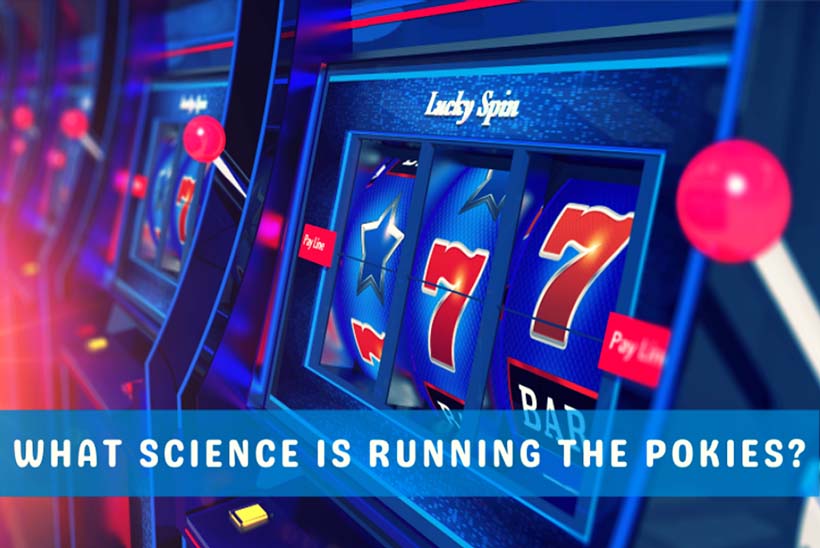What Science is Running the Pokies?

Generally speaking, a Pokie machine or a Slot machine is a specific gambling machine which allows its customers to partake in a game of utmost probability and chance. As a standard, pokie machines usually have a screen consisting of three or more reels, which tend to spin once the game is said to be activated.
There are still some skeuomorphic features in modern pokie machines, such as levers used to initiate plays. Nevertheless, most early machines are now controlled by buttons and touchscreens, and in succession, Random number generators have replaced the mechanics of early machines.
There are currency detectors installed on pokie machines which helps verify the nature of payment that is made, whether it’s coins, cash, vouchers, or gambling tokens. When the spinning reels stop, the machine pays off based on the combination of symbols displayed on the screen. In NZ-based leading online casinos, pokie machines are the most popular form of online gaming and earn more than 70% of the average casino’s revenue.
The Pay Table
There is a table on each machine that indicates the number of credits the player is accountable to receive as long as the symbols on the paytable arrange themselves on the pay line just as they should. There are symbols that are known as wilds; a wild symbol is one that substitutes for nearly all other symbols to form a winning combination.
A Brief Universe of the Reels
A traditional slot or pokie machine displays and determines results by spinning mechanical reels. Five-reel machines were the original slot machines, but three-reel machines became the standard quickly since they were more reliable and simpler.
- A three-reel pokie machine with 10 symbols would allow only 1000 combinations.
- A pokie machine with 22 symbols would amount to 10,648 different results.
- And finally, a virtual reel machine with 256 reels would result in 16,777,216 combinations.
The Matter of Computerization
As microprocessors become more commonplace, manufacturers are now able to offer different probabilities for each symbol on each reel. Players may believe they have gotten very close to winning a symbol, when in fact the likelihood of winning is much less.
It was during the 1980s that a wave of microprocessor-powered machines hit the United Kingdom. Upon inserting a coin into the machine, it would either be directed directly to the owner’s cashbox or directly into a channel that would be used as the payout reservoir, with the microprocessor monitoring this channel to determine the number of coins in it.
The Role of RNG (Random Number Generators)
Since online casino gambling is such a remote activity, fair gaming is a mandatory requirement. Using random number generators (RNGs) allows online casinos to satisfy this requirement for online slots.
Online casinos generate random number generators from computer algorithms as a way to ensure that the outcomes of each spin are totally random. In order to accomplish this, it creates a sequence of numbers, which correspond to symbols on each reel, and that no one can predict except with chance.
The Division of RNGs
There are two kinds of RNGs, one is the Hardware Random Number Generator and the other is the Pseudo-Random Number Generator.
- RNGs that generate random numbers via hardware are known as a hardware random number generators.
- Meanwhile, pseudo-randomly generated numbers are those that appear to be random only.
The Functionality of the RNG
First, with the software, a seed value is set up for the algorithm. As an underlying principle, anything that runs repeatedly must have a starting point. That value is called the seed value. A seed value is generated through a series of repeated activities or actions occurring in the computer.
There can be several possibilities. It might be a process that is running, a pattern for a mouse-click, a pattern of keystrokes, or even the clock of the computer.
The Thing About the Return to Player Value (RTP)
RTP (return to player) value is another aspect of slot machines in terms of science. Slots, on average, pay out a certain amount of return over a period of time, which is called their RTP.
Slot machines have their RTP calculated and expressed in percentage terms; thus, a 96% RTP means that a slot machine will pay back $96 for every 100 dollars wagered over the life of the machine.
Slot Machines and Their Prices
A player’s cost per spin represents the price. Therefore, for a 100-cent spin, the price that the player sees is exactly what the player pays. However, on the operator’s side, the price would also reflect house edge along with the cost per spin.
If the house edge is therefore 7%, the operator’s profit is mainly determined by the 7% they collect on each spin over the course of time.
Conclusion
Well, that is it. To quote Stephen Hawking, when you understand the way one thing operates you in a way learn to control it. The same goes for the pokies!
































































































